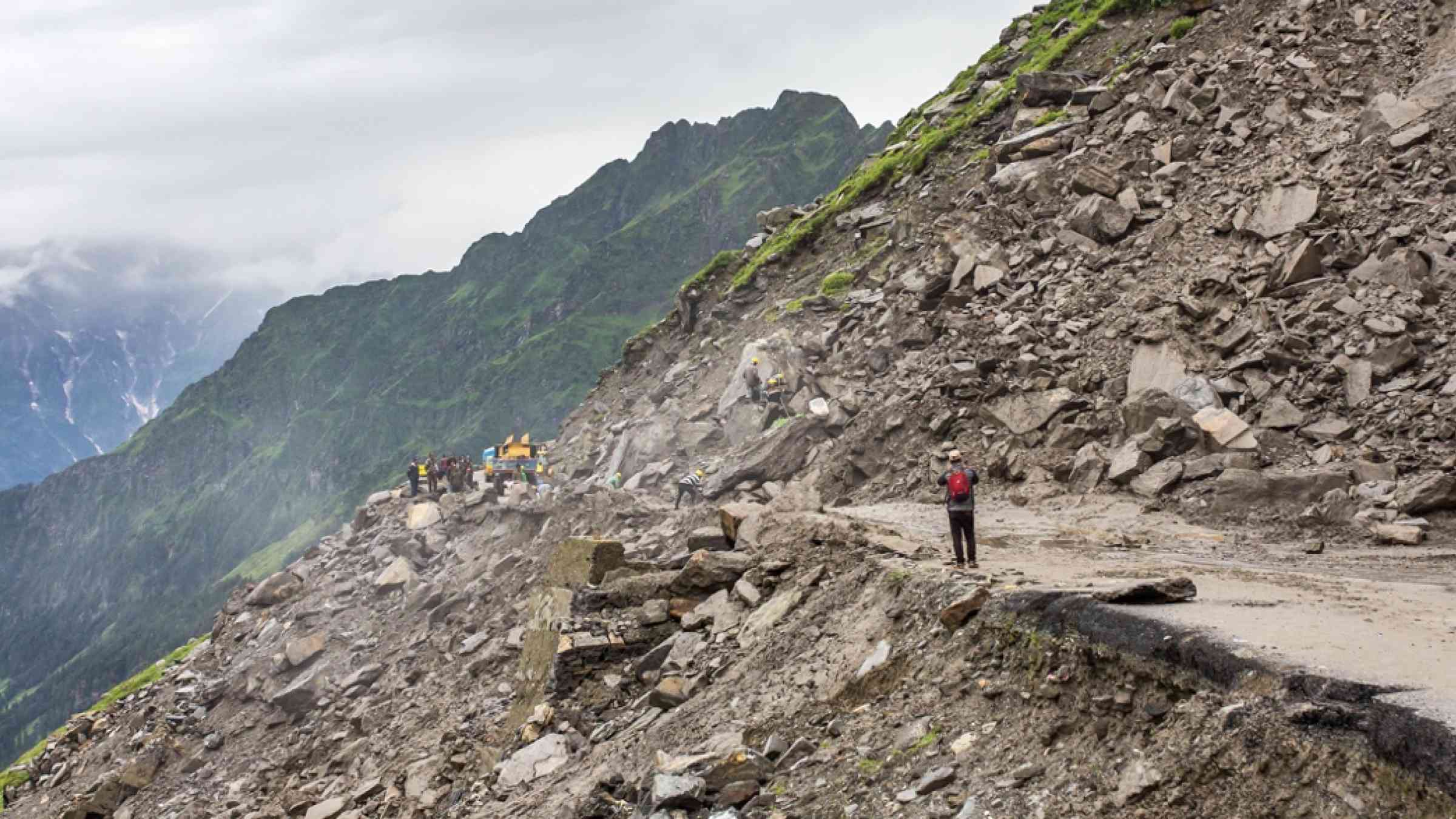Protecting poor neighborhoods from landslide risk

As low-income, informal settlements bloom in the tropics, their risk of landslides increases. A new modeling tool incorporates urbanization factors to protect the region’s poorest neighborhoods.
Landslides adversely affect low-income regions, killing an estimated 4,600 people and causing $20 billion in damage each year. Those grim numbers are expected to grow thanks to the clash of two modern issues: climate change and urbanization.
The risk is especially elevated in the tropics, where poverty rates are high and informal settlements creep up steep hillsides. The tropics also face more intense weather systems under climate change, with extreme rainfall further slackening the soil. Landslide disasters have become 10 times more frequent in the past 50 years, with 80% of fatal landslides occurring in the tropics.
To measure the growing threat, researchers have developed a new model to quantify the interplay of climate change and urbanization. They recently applied the model to five tropical cities and found residents in informal settlements are up to 500% more exposed to landslide risk than their more urbanized neighbors. These results, which will be shared at AGU’s Fall Meeting 2022, suggest that landslides aren’t just physical processes but economic, political, and social ones, too.
Tropical Models
According to the United Nations, most of the world will live in the tropics by 2050. And as the population climbs, more people will crowd onto steeper slopes circling tropical cities. These unplanned neighborhoods increase the likelihood of landslides by carving away a slope’s natural stability, adding weight to the surface, removing vegetation, and improperly draining rainfall.
Despite the risk, “people might have no other choice than living in hazardous zones,” said Ugur Öztürk, a landslide researcher at the University of Potsdam and lead author on the study.
The new model works at both global and local scales, identifying regional hot spots of landslide risk as well as individual risk factors. Users can adjust typical landslide considerations like soil and slope, plus elements of urbanization like drainage and deforestation. Researchers hope the strategy can guide future development and prevent disasters in the poorest corners of the tropics.
In the past, researchers separately assessed factors including the hazard itself, exposure, and vulnerability to assess risk, Öztürk explained. “In our approach, we combine them.”
“Low-Regrets” Solutions
In the study, recently published as a commentary in Nature, researchers applied their model to five tropical cities: Antipolo and Baguio, Philippines; Bukavu, Democratic Republic of the Congo; Freetown, Sierra Leone; and Port-au-Prince, Haiti. Across all locations, informal settlements were more likely to appear on steeper slopes. In Freetown—where a 2017 landslide killed an estimated 1,100 people—65% of neighborhoods with the least access to roads (“most informal”) were on slopes 10° or steeper.
Next, the researchers explored the effects of rainfall in their model. In Freetown, they found that disturbed hillslopes in Freetown started to slide at a lower angle (18°) than natural slopes (26°) and that rainfall triggered slides on even gentler slopes. Settled slopes were 5 times more likely to slide than natural slopes, with climate change increasing the risk by another 50%.
By pinpointing problems, the model can also recommend specific prevention tools, researchers said. Policymakers can identify which neighborhoods are at greatest risk and target specific solutions. “In the optimum case you should decrease the landslide hazard,” said Öztürk.
The authors recommend “low-regrets” solutions—methods that provide both immediate benefits and long-term security. For instance, “if you have informal urbanization, very often there’s no water management,” explained Thorsten Wagener, a hydrologist at the University of Potsdam and coauthor of the study. Simple features like roof gutters and water tanks “might be beneficial for the household and at the same time reduce the landslide risk,” he said.
A Need for Local Knowledge
The threat of landslides isn’t news in the tropics. Residents know the risks, and many mitigation strategies are already in place, said Sandra Catane, an engineering geology professor at the University of the Philippines, Diliman.
“These are great ideas, but the challenge is the implementation,” she said. “The politics, the economic factors, it’s easier said than done.”
The research team recognized that in many regions both inside and outside the tropics, decisionmaking is siloed. City planners try to enforce building codes, engineers focus on stabilizing slopes, and social scientists study the factors forcing residents onto dangerous hillsides. Their study suggests more integrated ways to approach landslide mitigation.
Sharing knowledge with the local population can also be a challenge. Modeling can demonstrate the problem, Wagener said, “but getting that information to the people is a very, very complicated issue.…Local knowledge can be really critical for translating this into meaningful action.”
Catane agreed, adding that nongovernmental organizations often have a unique capacity to assist at the local level. She’s happy to see attention focused on the tropics and looks forward to further research on the socioeconomic pieces of the puzzle. “There has to be a long-term plan,” she said, but “I’m not pessimistic. It can be done.”